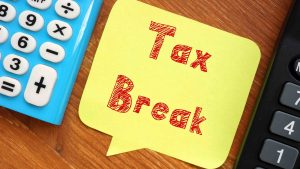In this comprehensive guide, we will explore the CLEAN function in Excel, which is used to remove non-printable characters from a text string. These non-printable characters can often cause issues when working with data, especially when importing or exporting data between different systems. By using the CLEAN function, you can ensure that your text data is free of any unwanted characters and ready for further processing or analysis.
CLEAN Syntax
The syntax for the CLEAN function in Excel is quite simple:
=CLEAN(text)
Where text is the text string that you want to remove non-printable characters from. This can be a cell reference, a text string enclosed in double quotes, or a formula that returns a text string.
CLEAN Examples
Let’s look at some examples of how to use the CLEAN function in Excel:
Example 1: Removing non-printable characters from a text string
Suppose you have the following text string in cell A1:
Hello, World! (with non-printable character)
You can use the CLEAN function to remove any non-printable characters from the text string:
=CLEAN(A1)
This formula will return the cleaned text string without any non-printable characters:
Hello, World!
Example 2: Combining CLEAN with other text functions
You can also use the CLEAN function in combination with other text functions to manipulate and clean text data. For example, suppose you have the following text string in cell A1:
John Doe (with non-printable character)
You can use the CLEAN function along with the LEFT and FIND functions to extract the first name from the text string:
=LEFT(CLEAN(A1), FIND(” “, CLEAN(A1)) – 1)
This formula will return the cleaned first name:
John
CLEAN Tips & Tricks
Here are some tips and tricks to help you get the most out of the CLEAN function in Excel:
Tip 1: Use CLEAN in combination with TRIM
While the CLEAN function removes non-printable characters, it does not remove extra spaces. To remove both non-printable characters and extra spaces, you can use the CLEAN function in combination with the TRIM function:
=TRIM(CLEAN(text))
Tip 2: Use CLEAN when importing data
When importing data from external sources, such as text files or web pages, it’s a good idea to use the CLEAN function to remove any non-printable characters that may have been included in the imported data. This can help prevent issues when working with the data in Excel or when exporting the data to other systems.
Common Mistakes When Using CLEAN
Here are some common mistakes to avoid when using the CLEAN function in Excel:
Mistake 1: Not using double quotes for text strings
When using the CLEAN function with a text string, make sure to enclose the text string in double quotes. For example, use =CLEAN(“text”) instead of =CLEAN(text).
Mistake 2: Expecting CLEAN to remove all unwanted characters
The CLEAN function only removes non-printable characters. It does not remove other unwanted characters, such as extra spaces or punctuation marks. To remove these characters, you may need to use additional text functions, such as TRIM, SUBSTITUTE, or REPLACE.
Why Isn’t My CLEAN Function Working?
If your CLEAN function isn’t working as expected, consider the following possible issues:
Issue 1: Non-printable characters are not the problem
If the CLEAN function doesn’t seem to be removing unwanted characters from your text data, it’s possible that the characters are not non-printable characters. In this case, you may need to use other text functions, such as SUBSTITUTE or REPLACE, to remove the unwanted characters.
Issue 2: Incorrect cell reference or text string
Make sure that you are using the correct cell reference or text string in your CLEAN function. Double-check your formula to ensure that you are referencing the correct cell or using the correct text string.
CLEAN: Related Formulae
Here are some related formulae that you may find useful when working with the CLEAN function in Excel:
1. TRIM: Removes extra spaces from a text string.
=TRIM(text)
2. SUBSTITUTE: Replaces occurrences of a specified text string with another text string.
=SUBSTITUTE(text, old_text, new_text, [instance_num])
3. REPLACE: Replaces part of a text string with another text string.
=REPLACE(old_text, start_num, num_chars, new_text)
4. LEFT: Extracts a specified number of characters from the left side of a text string.
=LEFT(text, [num_chars])
5. RIGHT: Extracts a specified number of characters from the right side of a text string.
=RIGHT(text, [num_chars])
By mastering the CLEAN function and related formulae, you can ensure that your text data is clean, consistent, and ready for analysis in Excel.





